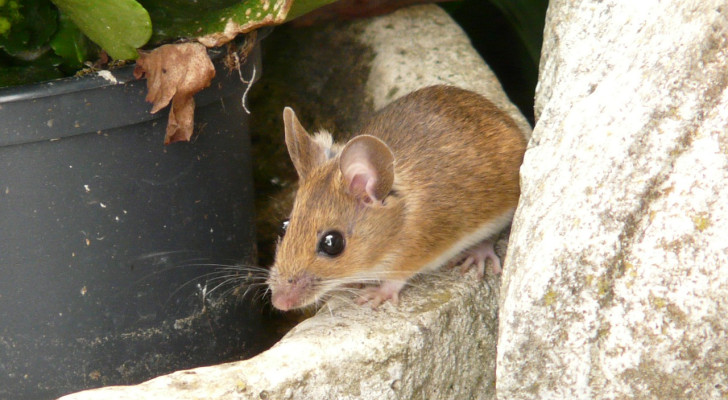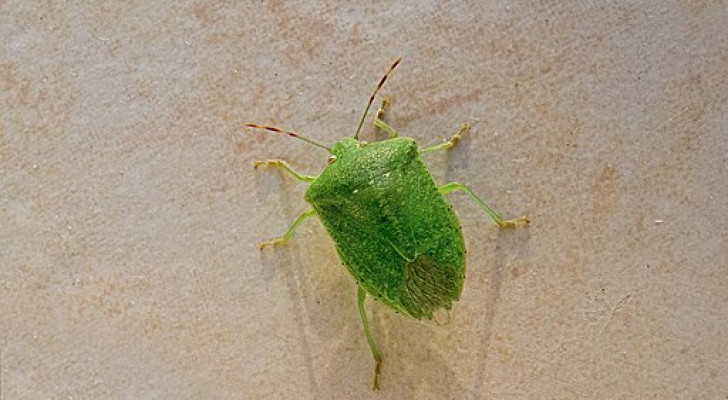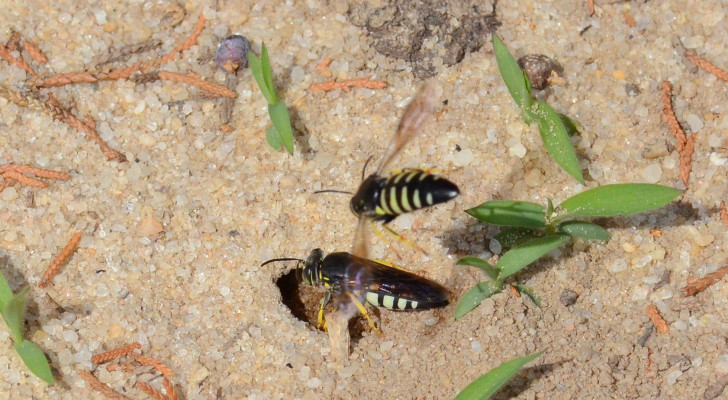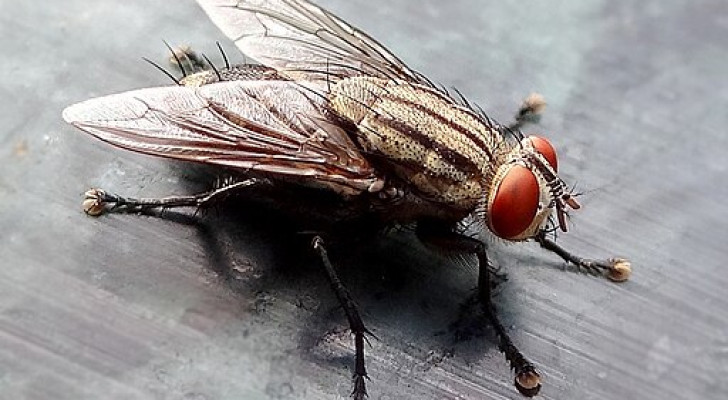Carpenter ants: how to get rid of them permanently and stop them from damaging your home
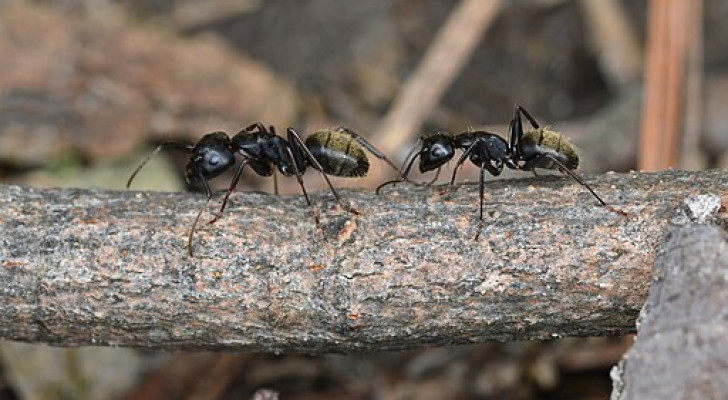
Carpenter ants are reddish-brown ants measuring 6-14 mm and are infamous for constructing very large colonies in wood. Attracted to damp wood, these ants can cause considerable damage to the structure of homes by chewing into wooden beams, porches, verandas, and roofs. Their presence can be detected by a trail of sawdust that they leave behind as they chew through the wood.
The short guide below will help you out if your home has been "invaded" by carpenter ants:
How to recognize carpenter ants
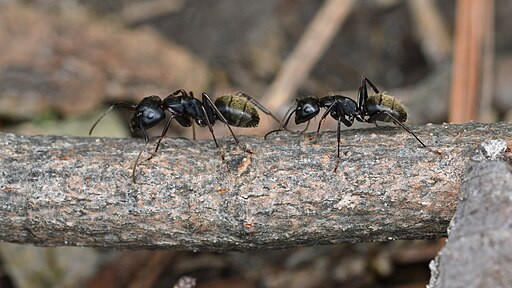
Ryan Hodnett/Wikimedia Commons
There are a number of species of carpenter ants, but the most widespread species is Camponotus ligniperda. This species can be distinguished from common ants by its large size (in fact, the queen can be up to 2cm in length). Another common carpenter ant species, Crematogaster scutellaris, can be easily identified by its red head and a stinger that points upwards.
Adult carpenter ants usually grow wings during the breeding season and can be recognized by their forward wings being longer than their rear ones.
So, how can you detect the presence of these destructive pests in your home?
- Search for carpenter ants during the evening hours: this is when carpenter ants come out of their nests in search of food and can be found feeding on (unprotected) candies, syrups, honey, sugar, meat and pet food;
- Noise: in the silence of the evening hours, it should be possible to hear the noise the ants make by moving around and gnawing on wood;
- Wood fragments: the most unambiguous sign of the presence of carpenter ants is the appearance of small piles of wood fragaments (similar to sawdust) near cracks and fissures; these ants do not actually feed on wood but simply burrow through it (to build their colony), leaving the wood fragments behind;
- Size and shape: as already mentioned, carpenter ants are larger than common ants. These ants can also be identified by their color (usually black or reddish), their elbow-shaped antennae or their large, heart-shaped heads.
How to eliminate carpenter ants
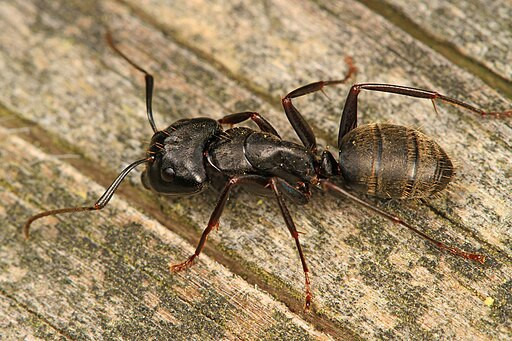
Judy Gallagher/Wikimedia Commons
There are several strategies that you can use to eliminate carpenter ants from your home:
- Outdoor measures: the most effective way to prevent a carpenter ant "home invasion" is to maintain your outdoor areas. Check all your trees, ensuring no branches touch your house (and the roof, in particular) which could provide access routes for the ants. Keep firewood piles off the ground and use inorganic mulch keep the wood from becoming humid;
- Indoor measures: since these ants like to nest in rotting, damp wood, it is advised that you reduce the humidity inside your home and fix any water leaks; seal any cracks and gaps which could provide access points to your home for the ants;
- Poisoned food bait: this remedy exploits the process of trophallaxis, ie. the exchange of food (usually from special glands) between social insects, including carpenter ants; by placing poisoned food bait near their nests, you can eliminate an entire colony fairly quickly;
- Destroy their nests: if you manage to locate their nests, you can destroy these by soaking them in a solution of water and boric acid (or by placing diatomaceous earth around the entrances);
- Remove olfactory stimulants: carpenter ants find food sources by smell. Washing the surfaces in your home with ammonia and/or spraying essential oils indoors will help to prevent them food sources in your house.
How to distinguish carpenter ants from termites
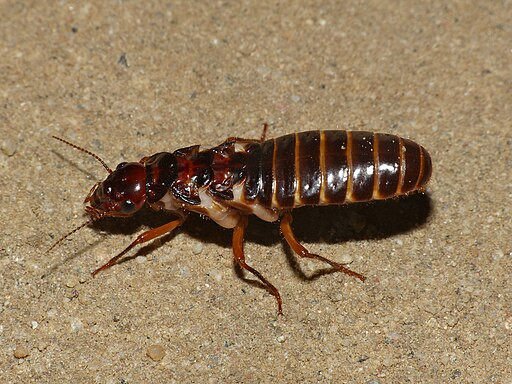
Bernard Dupont/Wikimedia Commons
Carpenter ants and termites look very similar to each other and it is very easy to confuse them. However, there are 4 main characteristics that you can check to identify between these insects:
- Termites have a near-seamless body, while carpenter ants have 3 distinct body segments, large heads and abdomens and a small thorax;
- Carpenter ants are always only black or red (depending on the species), while termites are white in their larval stage (turning black in adulthood);
- The wings of termites are twice as long as their bodies, are narrow and rougly equal in length to each other. The wings of carpenter ants are short and are different lengths (see above);
- The antennae of termites are always straight, while those of capenter ants have an "elbow bend" in them.
Now you know all about "your wood-munching enemies", you're ready to defeat them!

